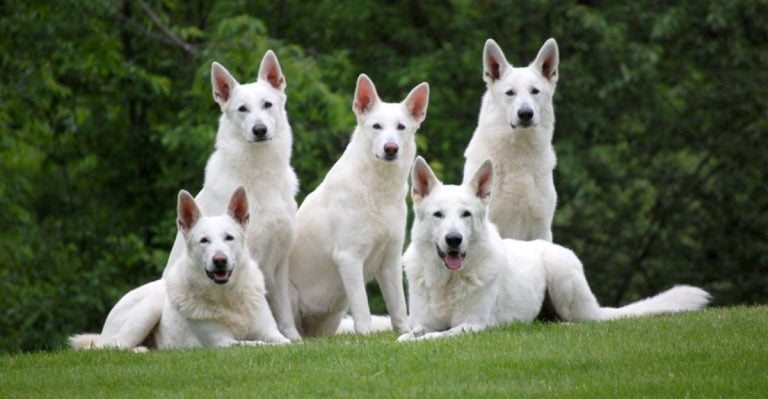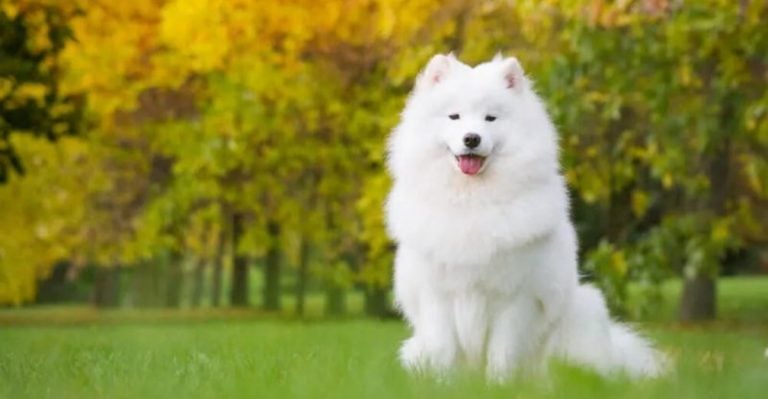Experts Reveal 17 Dog Behaviors That Prove Your Pup Is Emotionally Intelligent
You already know your dog is special—but have you ever suspected they might actually understand you on an emotional level? According to leading canine behaviorists, dogs aren’t just loyal companions or quick learners. Many show clear signs of advanced emotional intelligence, allowing them to read human emotions, respond with empathy, and even regulate their own behavior based on the social cues around them.
Emotional intelligence in dogs isn’t about obeying commands or learning tricks—it’s deeper than that. It’s about sensing when you’ve had a bad day, adjusting their energy to match yours, or offering quiet companionship when you need it most. Some dogs instinctively know when to give you space and when to lean in with comfort. These behaviors aren’t accidental—they’re signs of a dog that’s emotionally attuned in ways we’re only beginning to understand.
While all dogs have the potential for emotional connection, some exhibit particularly strong abilities in areas like empathy, self-awareness, and social adaptability. Experts say that recognizing these behaviors can help deepen your bond with your pet and even improve their overall well-being. Dogs that are understood emotionally tend to thrive.
So how can you tell if your furry friend has an emotional IQ that’s off the charts? We’ve compiled a list of 17 expert-approved behaviors that suggest your dog isn’t just cute or clever—they may actually be emotionally brilliant. From respecting personal space to sensing subtle mood shifts, these signs go far beyond the usual tail wags and paw shakes. If you’ve ever felt like your dog “just gets you,” you might be right. Read on to discover the remarkable ways your pup may be showing signs of emotional intelligence—and what it means for your relationship.
1. Empathy for Human Emotions
Your dog rushes to your side when tears fall, gently resting their head on your lap. This isn’t coincidence – it’s emotional intelligence in action. Dogs actually produce oxytocin (the love hormone) when they comfort their humans.
Research from Emory University confirms dogs can distinguish between happy and sad human faces, even without vocal cues. They process this information in brain regions similar to humans.
When your pup licks away tears or brings you their favorite toy during tough times, they’re actively trying to improve your emotional state – a sophisticated behavior that shows deep connection.
2. Recognizing Vocal Cues
Dogs develop an impressive vocabulary of human words – often 100+ terms – but their real superpower lies in understanding your tone. Researchers at Budapest’s Eötvös Loránd University discovered dogs process speech similarly to humans, using the right brain hemisphere for emotional tones.
Notice how your pup responds differently when you speak excitedly versus when you use a stern voice? They’re reading the emotional landscape behind your words.
This skill develops naturally through your relationship. The longer you’ve been together, the more nuanced their understanding becomes of your unique vocal patterns and emotional states.
3. Adaptive Social Skills
Socially intelligent dogs read the room like canine diplomats. They’ll approach your shy friend gently while playfully wrestling with your more exuberant visitors. This behavioral flexibility demonstrates sophisticated social cognition.
Watch your dog at the park – they adjust their play style for different dogs. With puppies, they’re gentle and patient. With energetic peers, they match that enthusiasm. With older dogs, they show appropriate respect.
Hungarian ethologist Dr. Ádám Miklósi notes this adaptability evolved through thousands of years alongside humans. Your dog’s ability to navigate complex social situations isn’t just impressive – it’s an evolutionary masterpiece tailored specifically for human-canine partnership.
4. Problem-Solving Abilities
Ever watched your dog figure out how to open the treat cabinet? That’s not just determination – it’s cognitive problem-solving at work! Dogs employ trial-and-error learning, observation, and memory to overcome obstacles.
Border Collie Rico famously learned over 200 object names, demonstrating vocabulary acquisition similar to toddlers. Your own pup’s problem-solving might be less dramatic but equally impressive – like learning exactly where to nudge the door that doesn’t quite latch.
Scientists at the Wolf Science Center found domesticated dogs actually outperform wolves in following human cues to solve problems, suggesting our companions evolved specifically to understand and work with human communication patterns.
5. Sensitivity to Household Changes
Your dog knew something was different before you even announced your pregnancy. This remarkable sensitivity stems from their heightened perception of subtle changes in routine, scent, and emotional atmosphere.
Dogs notice when suitcases appear or when furniture rearranges. They detect the emotional undercurrents during family arguments or celebrations. Their behavior often shifts accordingly – becoming protective, subdued, or extra attentive.
Veterinary behaviorist Dr. Karen Overall explains this awareness evolved as a survival mechanism, helping dogs anticipate environmental changes. In your home, this translates to a pet who notices everything from your new work schedule to relationship tensions, responding with emotional intelligence beyond simple habit.
6. Capacity for Forgiveness
Accidentally step on your dog’s tail and witness remarkable emotional resilience. After an initial yelp, they’ll typically return, wagging and ready to reconnect. This capacity for forgiveness demonstrates sophisticated emotional processing.
Unlike humans who might hold grudges, dogs live primarily in the present moment. They assess current emotional signals rather than dwelling on past injuries. This isn’t memory failure – they remember important events for years.
Animal behaviorist Patricia McConnell notes this forgiveness likely evolved because holding grudges would damage the cooperative human-dog relationship essential for survival. Your dog’s ability to forgive small transgressions represents emotional intelligence perfectly adapted for social harmony.
7. Reading Human Body Language
Your dog knows you’re leaving before you grab the keys, recognizing the subtle shift in your posture. Dogs are masters at reading human body language, noticing micro-expressions and posture changes imperceptible to most people.
Research from the University of Lincoln found dogs can differentiate between threatening and friendly human body language, responding appropriately to each. They track eye movement, facial expressions, and physical positioning with remarkable accuracy.
This skill develops through evolution and experience. Dogs who successfully interpreted human signals had survival advantages throughout domestication history. Your pup’s ability to know when you’re sad despite your smile isn’t mystical – it’s their finely-tuned observation of your unconscious physical cues.
8. Emotional Resilience
A thunderstorm rattles windows, yet your once-fearful rescue dog now calmly rests nearby. This transformation showcases emotional resilience – the ability to recover from stress and develop adaptive responses to previously frightening stimuli.
Resilient dogs don’t simply ignore fear; they process it differently. With supportive environments and positive experiences, they build neural pathways that moderate fear responses. Veterinary behaviorist Dr. Lisa Radosta compares this to human psychological resilience.
Emotionally intelligent dogs gauge appropriate reactions from their humans and adjust accordingly. When you remain calm during potentially scary situations, your dog learns to regulate their own emotional response – a sophisticated form of co-regulation that mirrors human-to-human emotional development.
9. Joyful Playfulness
Your dog invents games spontaneously – hiding toys for you to find or creating elaborate fetch variations. This creative play demonstrates cognitive flexibility and emotional engagement beyond simple instinct.
Playful dogs use play bows, self-handicapping (holding back with smaller playmates), and exaggerated movements as sophisticated communication tools. They adjust their play style based on their partner’s responses, showing remarkable social awareness.
Neuroscientist Gregory Berns discovered that dogs’ reward centers light up similarly to humans’ during play and social interaction. Your pup’s joyful playfulness isn’t just entertainment – it’s a complex emotional and cognitive process that strengthens bonds while exercising problem-solving skills and emotional regulation.
10. Fear Response Management
During a sudden thunderclap, watch how your emotionally intelligent dog startles but quickly recovers. Rather than escalating into panic, they assess the situation, look to you for cues, and regulate their response appropriately.
This sophisticated fear management involves the amygdala and prefrontal cortex – the same brain regions humans use for emotional regulation. Dogs with this skill can distinguish between genuine threats and false alarms.
Veterinary behaviorist Dr. Sophia Yin noted that well-adjusted dogs show appropriate caution without overreaction. Your dog’s ability to recover quickly from startling events isn’t just good temperament – it’s evidence of advanced emotional processing that allows them to maintain function despite momentary fear.
11. Understanding Human Routines
Monday morning arrives and your dog is already waiting by the door at precisely 7:45 AM – your typical departure time. This uncanny awareness of schedules demonstrates cognitive mapping of human routines and time patterns.
Studies from the University of Salford show dogs track time through circadian rhythms and environmental cues. They create mental frameworks of expected events, anticipating walks, meals, and your return from work with remarkable accuracy.
This time-keeping ability isn’t just habit – it requires sophisticated memory and pattern recognition. Your dog processes countless variables to predict your behavior: the clothes you wear, time of day, preceding activities, and even subtle changes in your movement patterns before regular events.
12. Expressing Gratitude
After you remove a painful thorn from your dog’s paw, they respond with gentle licks and prolonged eye contact. These aren’t random behaviors – they’re expressions of gratitude and recognition of your helpful action.
Canine cognition expert Dr. Brian Hare identifies these grateful responses as evidence of dogs’ understanding of intentional assistance. Your pup recognizes you’ve deliberately helped them and responds with affiliative behaviors.
Gratitude requires sophisticated emotional processing: recognizing the problem, understanding another being intentionally solved it, and feeling compelled to acknowledge this help. When your dog shows special affection after you’ve assisted them, they’re demonstrating emotional intelligence comparable to a young child’s understanding of social reciprocity.
13. Protective Instincts
Your normally friendly dog positions himself between you and the aggressive stranger approaching on your evening walk. This isn’t aggression – it’s calculated protection based on emotional assessment of potential threats.
Emotionally intelligent dogs distinguish between normal social interactions and potentially dangerous situations. They observe body language, tone, and context before determining appropriate protective responses.
Animal behaviorist James O’Heare notes truly protective dogs (versus fearful-aggressive ones) remain calm while placing themselves in protective positions. They use graduated responses – first alerting through body positioning, then escalating only if necessary. Your dog’s ability to appropriately protect without overreaction demonstrates sophisticated emotional processing that balances safety with social appropriateness.
14. Ability to Comfort
Your dog spontaneously brings their favorite toy when you’re sick in bed. This thoughtful gesture demonstrates their recognition of your distress and deliberate attempt to improve your emotional state.
Research from Johns Hopkins University shows dogs can detect subtle physiological changes associated with emotional distress. They notice altered breathing patterns, stress hormones, and even microscopic facial expression shifts invisible to most humans.
Comforting behaviors like leaning against you, gentle paw touches, or bringing treasured objects represent sophisticated empathetic responses. Your dog isn’t just reacting to your emotions – they’re actively working to modify them through learned comforting behaviors that previously succeeded in improving human emotional states.
15. Recognizing Personal Space
After a long day, you need quiet time – and your emotionally intelligent dog settles nearby without demanding attention. This respect for personal boundaries demonstrates sophisticated social awareness rarely seen outside primates.
Dogs learn to recognize subtle cues indicating your need for space: body positioning, sigh patterns, facial tension, or activity changes. They balance their desire for interaction with your current emotional capacity.
Canine behavior specialist Alexandra Horowitz notes this space recognition develops through social feedback. Your dog has learned from your responses which behaviors are welcome when. Their ability to modulate interaction based on your emotional state represents complex emotional intelligence – they’re not just responding to commands but interpreting your unspoken emotional needs.
16. Mirroring Human Energy Levels
Morning yoga session? Your dog stretches alongside you. Dance party in the kitchen? They’re bouncing with excitement. This energy matching isn’t mimicry – it’s emotional synchronization demonstrating remarkable attunement.
Dogs naturally align their arousal levels with their human companions through a process ethologists call emotional contagion. They read your energy through body language, breathing patterns, and vocal tones, then adjust their own state accordingly.
Researcher Monique Udell found this synchronization strengthens human-dog bonds and facilitates cooperation. Your dog’s ability to match your subdued energy during quiet activities and your enthusiasm during celebrations shows sophisticated emotional intelligence that promotes harmony. This skill helps explain why dogs integrate so seamlessly into diverse human lifestyles.
17. Demonstrating Self-Awareness
After an overexcited play session, your dog voluntarily retreats to their bed for a timeout. This self-regulation shows remarkable emotional intelligence – they’re monitoring their own arousal levels and taking steps to manage them.
Self-aware dogs recognize when they’re becoming overstimulated or anxious. They employ calming strategies like seeking quiet spaces, engaging in self-soothing behaviors like gentle licking, or removing themselves from triggering situations.
Animal cognition expert Dr. Marc Bekoff notes this self-monitoring requires sophisticated emotional processing similar to aspects of human consciousness. Your dog’s ability to recognize and manage their own emotional state demonstrates they possess not just emotions but awareness of those emotions – a key component of emotional intelligence.























